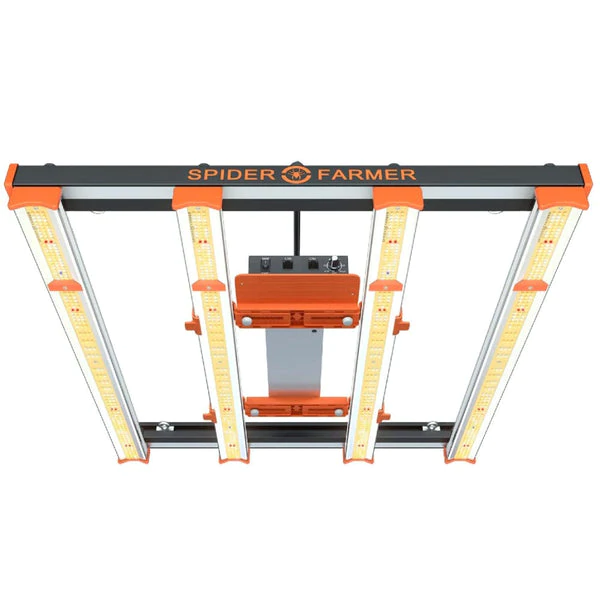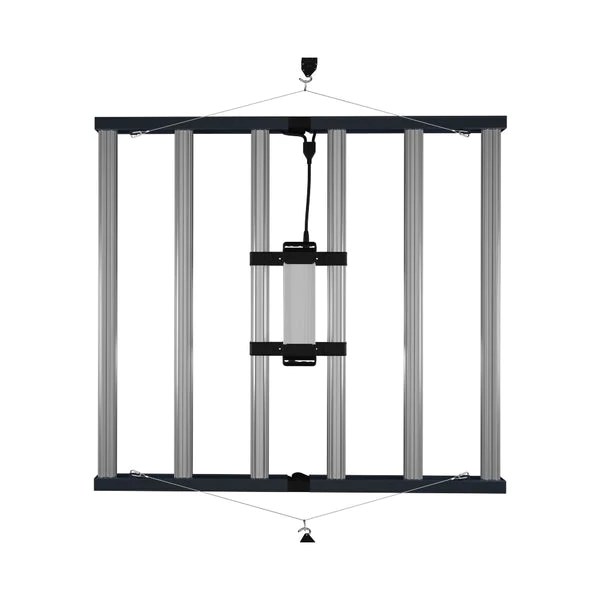Spider Farmer SE3000 300W Dimmable Full Spectrum LED Grow Light VS Spectrum King Phoenix 340W LED Grow light
Growing plants can be as straightforward or as complicated as you’d like to make it. If you’re growing a couple of plants for personal use and you live somewhere relatively sunny, you can simply place your plant outdoors and let the miracle of natural light and photosynthesis do their job. However, the truth is that not everyone has the luxury of living in suitably warm or sunny environments, meaning they can’t easily grow plants outdoors without running into a vast array of issues and complications. If that happens to describe your situation, then you’ll need to bring your plants indoors to keep them suitably warm and ensure they have access to enough artificial light.
But even if you do happen to live in a relatively warm and sunny place, you may also need to rely on artificial light sources if you happen to be growing multiple plants. However, multiple plants will need access to more powerful lighting solutions to grow appropriately and yield a quality harvest.
Please continue to find out everything you’ll want to know about the best indoor growing lights currently available on the open market so that you can better determine which ones are the best fit for your particular growing needs.
Spider Farmer SE3000 300W Dimmable Full Spectrum LED Grow Light

Features:
This Spider Farmer LED grow light features uniquely designed 4 LED strips that extend to the edge to provide more even canopy coverage, especially on the outer edges of the growing area. With 896 SAMSUNG LM301B diodes, the SE3000 Led Grow Light consumes 300 watts at 822.82 umol/s, achieving an impressive 2.75 umol/J of PPE, covering a high yield full-cycle growth of 3'x3'. The full spectrum (380–410nm, 660–665nm, 730nm, 3200–4200K, 4800–5000K) is ideal for vegetable flowering to suit every stage of the plant cycle. The dimmer knob is ideal for growers to adjust the light intensity for different growth stages. The SE3000 grow light comes with a detachable driver and long power cord to reduce ambient heat in the grow space for a longer lifespan.
Spectrum King Phoenix 340W LED Grow light

Features:
Spectrum King’s Phoenix 340W Veg is the most efficient LED light fixture on the market with a dedicated plant spectrum. SK Cryo-Therm cooling technology enables ultra-thin profiles, maximizes airflow and minimizes microclimates. It has unmatched performance and reliability in its class. It is optimized for single or multi-level planting near the canopy. The Spectrum King Phoenix 340W Veg sets a new benchmark for what’s possible with grow lights. The full spectrum is ideal for most light-loving plant seedlings, vegetation and the entire growth stage of flowering. IP65 waterproof horticultural lighting system, can be used in humid or water vapor environment, easy to use, plug and play.
What to Consider When Choosing the Best Grow Light
Whether you’re hunting for a grow light to supplement natural light for indoor overwintering of potted patio plants, or you’re looking to start seeds indoors for transplanting to the garden in spring, a grow light can help.
Cool, Warm, and Full-Spectrum
Grow lights are labeled with numbers like 2,500K or 6,500K, which tells you the temperature of the light according to the Kelvin scale of measurement. The higher the number, the cooler the light. So a bulb with a Kelvin rating of 6,000K will have a white or bluish tint, whereas a 3,000K bulb will be yellower. Each type of light — warm or cool — stimulates specific plant behavior.
If your goal is to improve foliar growth in your houseplants or grow leafy greens or seedlings, choose a cooler spectrum bulb around 6,500K. Warm light will have a lower Kelvin rating and is ideal for flower production in houseplants and fruiting plants like citrus. When in doubt, full-spectrum lights take out the guesswork and offer a combination of both cool and warm light for the best of both worlds.
LED vs. Fluorescent Bulbs
Standard fluorescent bulbs are a weak home light source but they’re great for supplementing natural light for houseplants or starting seedlings. Their cooler light makes them one-dimensional, so they’re ideal when lush foliage, not flowers, is the goal. Because their light cannot penetrate plant leaves with strong intensity, the grower must locate the light within a few inches of the top of the plant to be effective.
Full-spectrum compact fluorescent lights (CFL) are a better option. Available in tube and bulb forms, CFL grow lights are more intense than standard fluorescent lights.
LED grow lights, not to be confused with regular LED lights, are more expensive than fluorescent lights but they make up for that with longevity and energy savings. LEDs have both blue and red lights to mimic the full-color spectrum of the sun and might emit a bright, purplish glow. That’s not a big deal if the lights will be in a basement or a garage, but it’s something worth considering if they’ll be in a living area. Like fluorescent bulbs, LEDs are available in tubes for lighting a tray of seedlings or as bulbs when you want to light a specific plant.
Bulb or Stand Setup
The number of plants or seedling trays you want to grow is a good indicator of the kind of grow light best suited to your situation. Although a single bulb is perfect when positioned above a sun-loving succulent during the winter, seedling trays are better suited to a stand system that allows you to raise the light as the seedlings grow taller. So, whether it’s a premade stand with lights attached or one you build from scratch with an inexpensive wire rack and a hanging grow light bar or two, ultimately, your budget will have the final say.
Premade stand setups are pricey and if your seed-starting plans are modest, consider building your own system. However, houseplant enthusiasts might gravitate toward a more aesthetic premade grow light stand better suited to indoor living spaces.
Bells and Whistles
For houseplants, consider a full-spectrum grow light attached to a bendable or gooseneck arm that allows you to position the light directly above the plant. Some are stationary lamps for tabletops, and others have a clamp at the end of the bendable arm so you can attach the light to the edge of a desk or table. Intended for use with one or two houseplants, these lights often come with timers so you can cater to a plant’s specific light needs and a USB connector for plugging into a computer.
For seed starting and flowering houseplants, some full-spectrum grow light panels come with timers as well as remotes that allow you to change the type of light emitted based on the plant’s growth stage — cool light for seed starting, warm light for flower production, and full spectrum when you’re uncertain about the type of light you need.
Conclusion
Different options work best for different solutions, so pick the one that’s right for you and work to its advantages. Once you have selected the right light for your needs, you can start growing plants. After choosing the soil type, your fertilizer preferences, and a few other things, of course!
评论
发表评论